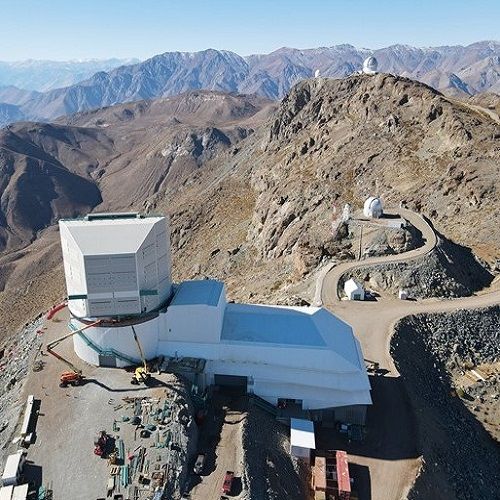An algorithm designed to uncover asteroids that are “potentially hazardous” to the Earth has made its first discovery.
The observatory is set to undertake a 10-year survey of the night sky, during which the algorithm will be used extensively.
Its first discovery is a roughly 180m-long asteroid, designated 2022 SF289, which was revealed during a test drive of the algorithm with the ATLAS survey in Hawaii.
Finding 2022 SF289, which poses no risk to Earth for the foreseeable future, confirms that the next-generation algorithm, known as HelioLinc3D, can identify near-Earth asteroids with fewer and more dispersed observations than current methods require.
“By demonstrating the real-world effectiveness of the software that Rubin will use to look for thousands of yet-unknown potentially hazardous asteroids, the discovery of 2022 SF289 makes us all safer,” said Rubin scientist Ari Heinze, the principal developer of HelioLinc3D and a researcher at the University of Washington.
The solar system is home to tens of millions of rocky bodies, ranging from small asteroids not larger than a few feet to dwarf planets the size of our moon. Most are distant, but a number orbit close to Earth and are known as near-Earth objects, or NEOs.
The closest of these – those with a trajectory that takes them within about five million miles of Earth’s orbit, or about 20 times the distance from Earth to the moon – warrant special attention. Such “potentially hazardous asteroids”, or PHAs, are systematically searched for and monitored to ensure they won’t collide with Earth.
The Vera C. Rubin Observatory is set to join the hunt for these objects in early 2025. Its observations should help to dramatically increase the discovery rate.
Rubin will scan the sky with unprecedented speed using its 8.4m mirror and massive 3,200-megapixel camera, visiting spots on the sky twice per night rather than the four times needed by current telescopes. This different observing cadence has required researchers to develop a new type of discovery algorithm to reliably spot new objects in space.
With Rubin still under construction, the team wanted to test HelioLinc3D to see if it could discover a new asteroid in existing data – one with too few observations to be found by today’s conventional algorithms.
The algorithm was deployed on NASA’s specialised telescope systems ATLAS, which reached full deployment last year and also has a mission to hunt out PHAs. Using ATLAS, HelioLinc3D spotted its first PHA, 2022 SF289, which was initially imaged by ATLAS on 19 September 2022 at a distance of 13 million miles from Earth.
ATLAS had observed 2022 SF289 three times on four separate nights, but never the four times in one night required for it to be identified as a new NEO. HelioLinc3D successfully combined fragments of data from all four nights to make the discovery.
“Any survey will have difficulty discovering objects like 2022 SF289 that are near its sensitivity limit, but HelioLinc3D shows that it is possible to recover these faint objects as long as they are visible over several nights,” said Denneau. “This in effect gives us a ‘bigger, better’ telescope.”
Currently, scientists know of 2,350 PHAs but expect that more than 3,000 are yet to be found.
Source: E&T










